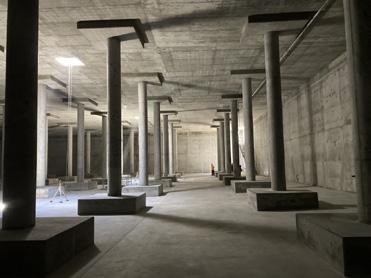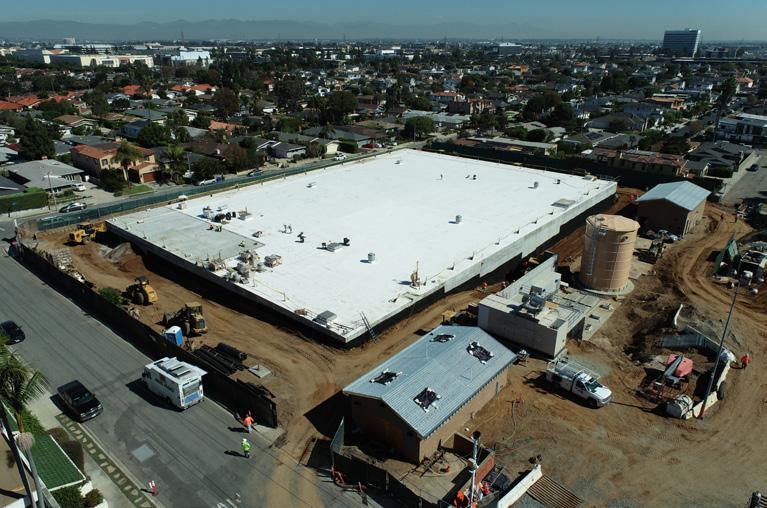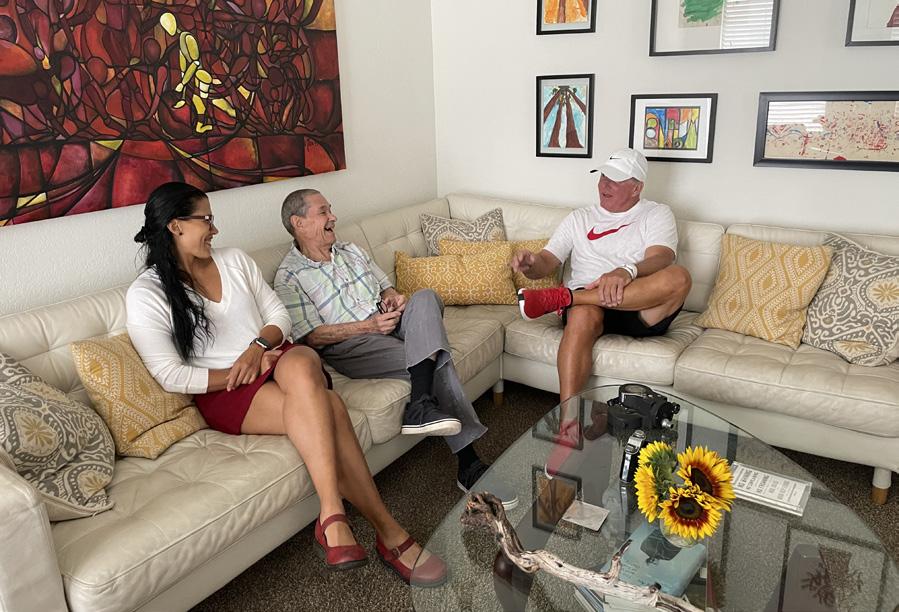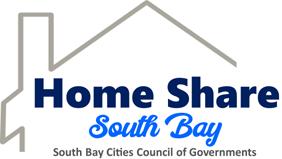




SBCCOG’s 23rd General Assembly - The South Bay: Leading the Way in Resilience and Adaptability
Thursday, March 23, 2023 9 a.m. to 3 p.m. (registration 8:30 a.m.; continental breakfast and lunch included)
Join us at the 23rd annual conference that brings together South Bay communities to address issues of mutual interest. The conference will feature panel discussions and interactive exhibits. This year’s program will explore how the South Bay is adapting to the growing impacts of climate crisis and working to create a more resilient future. The community, as well as county, state and federal legislators representing the South Bay, are invited to hear an array of speakers.
This free event is made possible by the SBCCOG’s generous sponsors. Become a sponsor now and start receiving recognition immediately. Contact Rosemary Lackow at rosemary@southbaycities.org to sign up for one of the following categories:



Golden Circle: $10,000 · Patron: $7,500 · Benefactor: $5,000 · Sponsor: $2,500
Watch for more notices and check the SBCCOG website at southbaycities.org/general-assemblies for more information.
The South Bay Cities Council of Governments (SBCCOG) is once again in search of the community’s best photographs that highlight “what is unique and beautiful about the South Bay and where you find the beauty in your community.”

Last year, the SBCCOG received so many stunning coastal shots making it clear why the community loves the South Bay. This year, there is a new twist. The contest is inviting your most creative and artistic shots of your city’s local landmarks. We want to know, what you and others see that instantly reveals it’s your city? Is it a statue, an historic building, a refinery, or a water tower? There is no wrong answer, it’s what speaks to you.
The contest kicks off January 1, 2023. Entries must be received by 5 p.m., February 10, 2023. Ten finalists will be selected by the SBCCOG staff and board of directors. The winner will be selected by a vote of attendees at the 23rd General Assembly. The winning image will be announced and displayed at the event on March 23, 2023.
Visit southbaycities.org/photo-contest to enter and review contest details, rules and deadlines.
Manhattan Beach moves one step closer to water sustainability as it constructs a new Peck Reservoir
The 8-million-gallon reservoir’s cavernous interior is comprised of concrete columns and 2-foot-thick walls holding up the concrete roof slab, about the size of a football field.

The new reservoir is built on a pre-existing 2.7-acre reservoir site near the intersection of Peck Avenue and 19th Street.
With the ongoing drought realities as well as the community’s push for best water conservation practices, the City of Manhattan Beach devised a plan in 2010 to address its aging reservoir and maintain a reliable and sustainable source of fresh water for residents for many years into the future.
Twelve years later, that plan is finally taking shape with the $34 million Peck Reservoir Replacement Project, funded by the city’s water enterprise funds. The project was the top priority of the city’s 2010 Water System Master Plan. It not only increases reservoir capacity by 500,000 gallons, but also substantially upgrades its 60-year-old utility infrastructure with state-of-the-art systems and equipment.
Construction on the new reservoir, located at the intersection of Peck Avenue and 19th Street, began in October 2020 and includes:

• A new 8-million-gallon potable water reservoir for operational, fire protection, and emergency storage
• A new pump station building with new efficient equipment that will transport water from the reservoir to the city’s water distribution system
• Replacement of the off-site groundwater well transmission pipeline
• A new groundwater treatment facility with a modern filtration system that enables greater use of the city’s local sources of drinking water
These new facilities will help the city provide long-term dependability to residents and stakeholders.
“This project is an example of the city’s commitment to enhance existing facilities and use more groundwater,” said Manhattan Beach Mayor Steve Napolitano. “By utilizing more of the city’s groundwater, the city

The new partially buried facility will be visually buffered by landscaped retaining walls and earth berms. Native drought tolerant plants, shrubs and grasses will beautify the site, along with colorful blooming crepe myrtle trees along 19th Street and Peck Avenue.
reduces the need to import water and ensures a steady water supply is readily available to service Manhattan Beach homes for drinking water and to utilize during an emergency.”
Manhattan Beach’s clean water is imported from the Metropolitan Water District of Southern California and from cityowned groundwater wells.
The Manhattan Beach City Council anticipates future cost savings by drawing more from local wells, which is typically more cost-efficient than importing water. ∙
It is estimated that construction will be near completion by winter 2022-2023, with the commissioning of the reservoir expected in March 2023. Additional information about the project can be found at manhattanbeach.gov/peckreservoirproject.
Following a Close Brush with Homelessness After a Pandemic Job Loss, Redondo Beach Woman Finds Path to Long-Term Stability Through Home Sharing
At the end of 2019, Elena Becerra felt on track toward achieving the American dream. She had a full-time job she loved teaching her native language Spanish to students at South Bay schools. Originally from Venezuela, she and her husband had immigrated to the United States from the UK in 2015. Her husband had a lucrative job that enabled the couple to live in Redondo Beach with their two teenage children.
However, like so many, her life turned upside down in March of 2020 when the world shut down due to the COVID-19 pandemic.
“The language academy closed and the Spanish programs at all the schools were canceled. I was out of a job for almost eight months,” Becerra said. Her husband also lost his job. “We were just living day-by-day,” she added. COVID exacerbated pre-existing marital tensions and the couple separated. Soon after, her children moved in with their father. Becerra stayed behind in their rented home,
caring for her two aging parents—living in the United States on temporary protected status. Her mother, disabled due to multiple sclerosis, is completely bed bound. Without a social security number, she is unable to move to a care facility.

When businesses started reopening, Becerra began teaching again part-time on Zoom, but without her husband’s income, she could only cover 60% of the rent. Although she never stopped paying what she could, when the eviction moratorium ended in March 2022, she received a three-day notice from the property owner to pay or move out.
“[At that point] I saw myself homeless. It was an impossible situation. I knew this was coming. And I was doing things to avoid that moment, but in the end, it happened,” she said. “My main worry was always my parents.”
She tried to find a less expensive place to live, but with her advanced-age parents and no full-time job, she faced repeated rejection.
While she waited on pending COVID rent relief, she actively sought help from various organizations, without success.
Eventually she reached out to her city council representative, former South Bay Cities Council of Governments (SBCCOG) Board of Directors Chair Christian Horvath, for help. Horvath connected Becerra with Lila Omura, a homeless outreach/housing navigator for the City of Redondo Beach.
Omura arranged a meeting with Ronson Chu, senior manager of the SBCCOG’s Homeless Services Program. Through the SBCCOG’s Client Aid program, which provides last-resort rental assistance, Chu arranged for Becerra to receive $3,200 to cover the following month’s rent. The SBCCOG’s Home Share South Bay program would help Becerra find a renter for a spare room to help defray the cost of her future rent payments. The state’s Housing is Key program would also help Becerra with the back rent owed to the
According to The Point in Time 2022 Homeless Count published September 8, 2022: The South Bay’s unsheltered population was more than
–a less than 3% drop compared to 2020 (the last time the count was conducted) 1,582
South Bay seniors 55+ were experiencing homelessness, a jump of 42% from 2020
landlord. Chu immediately called the property owner and explained the plan to help.
“We were at her home and able to reach her landlord via speaker phone. It was two outreach workers, me, Elena and her father around the dining table,” Chu said. “In this situation, Elena’s landlord had a great heart and was able to work with us. When the landlord agreed with her prevention plan, you could see the weight being lifted off her [Becerra’s] shoulders. Elena spontaneously burst into happy tears. Her emotion was infectious, as our outreach workers began tearing up as well.”
“I was so relieved I couldn’t believe that someone could so easily make a phone call and say, ‘we can solve this problem.’ I could breathe again,” she said. “But more than helping me, it was the belief that I was able to get out of this situation [that helped most]. But I needed someone to pull me out. And that’s what he [Ronson] did.”
The Home Share South Bay, program aspires to reduce homelessness by supplying a housing resource, particularly for seniors. It matches up compatible homeowners and renters with spare rooms for rent with tenants seeking housing.

“[I said] that’s perfect. That’s what I’m looking for. My dad needs a friend, who is close to his age,” Becerra said.
Becerra offered the room to 62-year-old Ron Bachmeier, now semi-retired following a career at Trader Joe’s. He now helps seniors on the Palos Verdes Peninsula through the downsizing process as they move into assisted living situations. He also considers the living situation “perfect,” because he can come and go as he pleases, yet also has company “to watch TV with.”
Through his work, Bachmeier often sees people in a position to help. “People complain that there are so many homeless people who are struggling,” he said. He suggests others consider opening their homes.
The SBCCOG Client Aid and Homeshare program are funded through the Los Angeles County Measure H fund. In partnership with South Bay cities, the SBCCOG utilizes this funding to develop innovative programs to combat homelessness.
Chu suggests neighbors can help each other by vouching or advocating for a person or family in peril or helping to make calls and connections.
He added, “It takes a village to house one homeless person. In this situation we were able to prevent three people from falling into homelessness.” ∙
Overall homelessness went up by 4.1% in Los Angeles County
Shortly after Bachmeier moved in, Becerra landed a position as a pre-school teacher in Manhattan Beach. She is now able to pay her full rent each month. She is also attending El Camino College, studying to become a full-time preschool teacher. COVID rent relief was finally granted in her case, which enabled her and her parents to remain debt-free in their home.
Home Share South Bay, through the Silvernest online platform, updates the ageold concept of homesharing. Through this program, compatible homeowners and renters find each other. Once a homeowner and home seeker list their profiles with Silvernest, the site provides support throughout the homesharing journey. It does this by screening their compatibility based on personal preferences. Rent is negotiated and can be reduced in exchange for household services. It’s free to sign up, match and message on the Silvernest site. COVID-19 protocols are included and addressed in the matching process.
For more information on Home Share South Bay visit: homesharesouthbay. org or contact Laurie Jacobs at laurie@ southbaycities.org.
“It takes a village to house one homeless person. In this situation we were able to prevent three people from falling into homelessness.”

Water Replenishment District Replenishes Ancient Aquifers to Meet Region’s Growing Water Needs
As Southern California faces the worst drought on record in 1,200 years, water is at the forefront of the minds of many. Some communities are facing water restrictions imposed by cities and utility companies. Many are asking, “why?” The Water Replenishment District (WRD) manages southern Los Angeles County’s groundwater supply. That’s billions of gallons of fresh water held in naturally formed underground aquifers. Groundwater provides nearly half of the drinking water supply for more than 4 million residents, or 11% of California’s population. The other half is imported from the Sacramento Delta and the Colorado River hundreds of miles away.
Drought conditions and climate change have reduced the amount of water that can be imported to Southern California. The good news is WRD has been preparing for climate change and extreme drought conditions through groundwater replenishment by increasing the use of recycled wastewater.
WRD was established by a vote of the people in 1959 to address the groundwater overdraft through replenishment. At its inception, WRD’s water supply for replenishment was 100% imported. This year, WRD celebrates 60 years of using recycled water to replenish the basins.
Through innovative planning, WRD and regional partners produce enough recycled and purified water to meet 100% of groundwater replenishment needs at its conservation facilities (also known as the spreading grounds) to eliminate the need for increasingly scarce imported water from the Sacramento Delta and the Colorado River. WRD reached this monumental goal three years ago thanks to its Water Independence Now (WIN) program and its regional partners, which include West Basin Municipal Water District, Central Basin Municipal Water
District, Metropolitan Water District, Los Angeles Department of Water and Power, the Bureau of Sanitation, and LA County Sanitation Districts.
Building on WIN’s success, WRD has set a loftier goal—“WIN 4 All.” Today, WRD is working with its regional partners to increase the supply of recycled water and store it in aquifers. The goal is to completely eliminate the need for any imported water in the region.
“The key to a sustainable drought-proof water future lies under our feet,” said Director Rob Katherman, who represents the South Bay on the WRD board of directors. “Though we can’t see them, groundwater aquifers are an immense natural underground reservoir –currently with empty storage space that can hold nearly 150 billion gallons of water. WRD is working with our regional water agencies to fill that storage space with reclaimed water that can be used during dry years.”
Established in 1959, WRD manages the Central Basin and West Coast Basin in southern Los Angeles County, two of the most utilized urban groundwater basins in the nation. Groundwater from these basins provides nearly half of the water supply for 4 million people in WRD’s service area, which includes 43 cities within 420 square miles.

Pictured is a diagram of how brackish water is purified to be used as drinking water.

One of the biggest “WIN 4 All” projects is WRD’s Regional Brackish Water Reclamation Program (RBWRP). Beneath the South Bay are billions of gallons of brackish groundwater. Brackish Water is water occurring in the natural environment that has more salinity than freshwater, but not as much as seawater. The condition is caused by seawater intrusion due to over-pumping during the first half of the 20th century prior to the construction of the West Coast Seawater Barrier built in the 1950s. WRD plans to extract, desalinate and purify this water. The result will be a new source of drinking water for the South Bay.
Through RBWRP, WRD will desalt this brackish water and create new space in the aquifer to store fresh water for future use. The process will produce up to 10 million gallons of fresh water a day using reverse osmosis to treat the salty water so it may be used as drinking water.
WRD has a successful track record with groundwater desalination projects. The WRD Robert W. Goldsworthy Desalter located in the City of Torrance was commissioned in 2001 and expanded in 2018. The facility treats up to 5 million gallons per day of brackish groundwater, which is put directly into the City of Torrance potable water system.
The RBWRP will build on this success to create a new supply of “drought-proof” water. Even during dry years, this water will be available to be extracted, treated, and made available to water suppliers in the South Bay. This water will help reduce the region’s need for imported water. It will also help us to plan for a more drought-resilient future and ensure we’re more prepared for challenges that climate change may bring.
∙
Learn more at wrd.org/regional-brackish-waterreclamation-program.

The Water Replenishment District offers a variety of engaging tours that teach about groundwater replenishment and basin management. Currently, WRD offers virtual and limited in-person tours of its newest advanced water treatment facility, the Albert Robles Center (ARC) for Water Recycling and Environmental Learning (ARC), located in Pico Rivera.
The ARC facility encompasses an advanced water treatment facility, a fully digital learning center and water-efficient demonstration gardens. To learn more about these tours, visit wrd.org/wrd-albert-robles-center-for-waterrecycling-and-environmental-learning-arc.

SBCCOG Environmental Service Center (SBESC) staff visited the Albert Robles Center for Water Recycling and Environmental Learning (ARC) this fall and learned how wastewater is treated to replenish the underground aquifer system. To view highlights of the SBCCOG’s tour visit, bit.ly/3Woamv5.
SBCCOG’s Environmental Services (SBESC) team member Dakota Townson checks out an interactive display at the WRD’s ARC.
Heat is a year-round threat to health in Los Angeles County. New UCLA research (bit.ly/3TL6uCs) shows that on extreme heat days, emergency room visits increase by 1,500 patients. Estimates (bit.ly/3szZmgf) show 16 additional people die per day of heat, with an extra 40 deaths per day by the fifth day of heat. In the South Bay, inland communities send an additional 15 to 25 people to the ER on extreme heat days, compared to two in coastal communities.
The risk of heat-related illness increases in already vulnerable populations--making climate change a threat multiplier. Environmental stressors like heat reveal weaknesses in our infrastructure, deepen the disparities of disaster exposure, and deeply affect community health.
Unequal health outcomes are tied to the varying distribution of heat burden. The 2021 LA County Climate Vulnerability Assessment (CVA) (bit.ly/3SHmgx8) shows that Hispanic and Latinx people make up 48.5% of LA’s population, but 66.9% of the population are located in communities with high vulnerability to extreme heat. A UC Davis study (bit.ly/3DAZRNA) found

Latino neighborhoods in the Los Angeles area were 6.7 degrees hotter than neighborhoods with few Latino residents. According to the Public Health Alliance of Southern California and UCLA Luskin Center for Innovation projections, parts of LA County will likely have more than 145 days a year above 90°F (bit.ly/3SH5r5q) by mid-century.
Communities suffering the brunt of extreme heat often live in historically redlined neighborhoods (go.nature.com/3TYPZ6d), where residents face chronic disinvestment and have been excluded from access to heat relief from climate-resilient infrastructure. It’s necessary to take the historical structural inequalities into account when working on thermal equity. We must recognize that vulnerable communities will need more resources to deal with extreme heat.
The planning, development and maintenance of our city’s infrastructure play a key role in our experiences with heat. Urban Heat Island Effect (UHI) is a phenomenon in which areas with more pavement and buildings trap more heat than greener, surrounding areas. Los Angeles experiences a high intensity of UHI (bit. ly/3Nrdm5B), resulting in an increase in polluted air and worsened health. As stated in the CVA, “We cannot achieve the goals of a reduced UHI effect without altering the urban design of neighborhoods as we know them today.” Resilient green infrastructure and equitable distribution of those resources are key to achieving equitable outcomes in urban cooling.
Even before securing funding for infrastructure investments, cities can raise public awareness about the risks of extreme heat and the connection between climate change and public health. UCLA’s Los Angeles Regional Collaborative for Climate Action and Sustainability (LARC) partnered with the LA County Department of Public Health (DPH) to launch an extreme heat social media campaign. The project pairs information about health risk with health protective strategies. It also provides resources for staying cool, such as accessing utility assistance programs and improving energy efficiency.
Published November 21, 2022 by the South Bay Cities Council of Governments
South Bay Watch is a quarterly bulletin to inform local leaders of subregional progress and alert them to emerging issues.
Governing Board: Chair John Cruikshank, Rancho Palos Verdes
1st Vice Chair Cedric Hicks, Carson
Members:
2nd Vice Chair Rodney Tanaka, Gardena Immediate Past Chair Drew Boyles, El Segundo
Carson, County of LA, El Segundo, Gardena, Hawthorne, Hermosa Beach, Inglewood, Lawndale, Lomita, Los Angeles, Manhattan Beach, Palos Verdes Estates, Rancho Palos Verdes, Redondo Beach, Rolling Hills, Rolling Hills Estates, Torrance
SBCCOG Executive Director Jacki Bacharach
Legal Counsel Michael Jenkins, Best Best & Krieger LLP
Treasurer Joseph Lillio, Director of Finance, City of El Segundo
To subscribe to SBCCOG newsletters or view past editions, visit southbaycities.org/newsletter.
To view a schedule of SBCCOG meetings, visit southbaycities.org/calendar. Website: southbaycities.org
Like us: facebook.com/SBCCOG facebook.com/SBESC
Follow us: @SouthBayCCOG @SBESC
Share #HeatSafeLA content by visiting laregionalcollaborative.com/heat.
Cities and local leaders are encouraged to share the #HeatSafeLA content with South Bay residents. ∙
Printed on an FSC paper and contains 30% post consumer waste.